
RA: Saab Group has more than three decades of presence in India. Tell us about your journey so far and the company’s footprint in the present Indian defence system?
OR: Saab has been a trusted supplier to the Indian armed forces since 1970s, when India acquired the Carl Gustaf shoulder launched weapon system.
Saab also supplies the Integrated Defence Aid Suite (IDAS) to both the Indian Air Force and Army Aviation Corps variants of the Advanced Light Helicopter (ALH), designed and manufactured by Hindustan Aeronautics Limited (HAL). IDAS is a fully integrated multi spectral warning system designed for self-protection of airborne platforms.
On the ALH, IDAS is integrated with an Indian designed and manufactured CMD system. IDAS is supported by a dedicated mission planning tool known as the Threat Library Management System (TLMS).
Saab has supplied the National Automatic Identification System (NAIS) network to India, which has given the country an AIS maritime picture over the entire Indian coastline. NAIS is one of the largest national AIS-based coastal surveillance systems ever to be deployed.
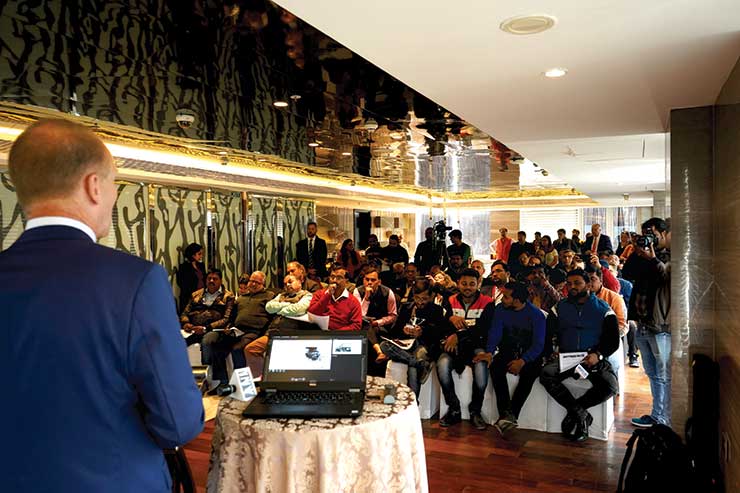
Saab Barracuda has had a significant presence in India over the years through its Indian subsidiary Barracuda Camouflage (P) Limited (BCL). Indian Army recognises Barracuda for its effective camouflage in battlefield deployment. Saab has supported the Indian Navy P28 Frigate programme by providing superstructures built in carbon-fibre composite material at the Indian shipyard GRSE where on-site support is also being provided by the company.
Our current operational systems in India include among others Ground Combat (Carl Gustaf), EW (IDAS), radio sets, radars, Fiber Optic Gyros (FOG), signature management (Camouflage nets), avionics, underwater products, Saab Kockums Naval super structures, air traffic management and maritime traffic management.
RA: The competition has intensified for Indian Air Force’s 114 fighter aircraft requirement. The process is on track and expected to reach the final stage in FY 2020-2021. What’s your expectation out of it?
OR: We have provided a comprehensive response to the Request for Information for fighter aircrafts to the Indian Air Force.
The Saab response delivers the perfect fighter for India’s current and future needs. It furthermore supports India’s ambition for stronger indigenous capabilities with latest technologies for development and production of future fighters like the AMCA.
Saab’s offer will enable Indian companies to take part in the industrial process of the world’s most advanced fighter by absorbing state-of-the-art capabilities and technologies with applications in both the military and civilian sectors.
Through the Make in India initiative, a generational shift in full spectrum fighter capabilities will accelerate the defence and industrial ambitions.
We understand that IAF is committed to a fast track process of RFP and we will await the future steps.
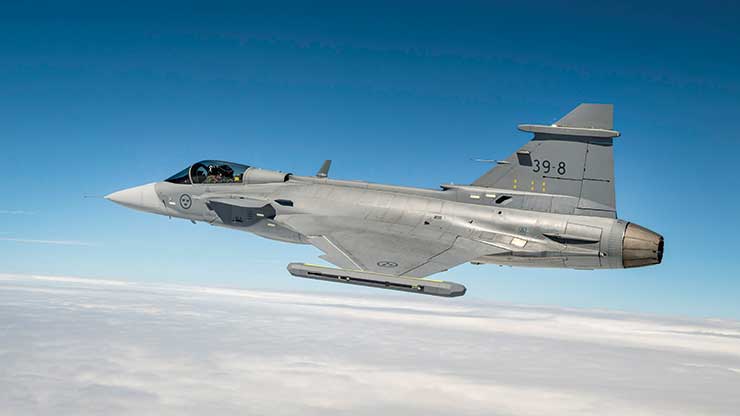
RA: In a recent interview you claimed that the price for Saab’s Gripen is quite competitive, and is the most modern fighter. Moreover, many experts are also of the opinion that Gripen is the most underestimated fighter jet among its competitors. Do you agree with the experts view? Please elaborate on Gripen’s edge in comparison to other fighter jets in competition.
OR: Saab’s Gripen E is the most modern multirole fighter aircraft in the world developed to counter and defeat the most advanced threats in the modern battlespace. It has been designed for continuous upgrades so as to counter and defeat new combat challenges; such an approach having been proven many times. The Gripen E’s inherent potential and design philosophy as well as the highly efficient manufacturing processes, ease of maintenance and supportability provides significantly lower upgrade, maintenance and operating costs. The aircraft will deliver significant cost savings over the expected 40+ years of operation in comparison with alternative platforms, which enables relevant training for enhancing operational capabilities of the Indian Air Force.
Such an upgradeable design together with transfer of design and upgrade capabilities are pre-requisites and provide the IAF indigenous upgrades and sustainable capability thus continuously meeting evolving operational needs.
Additionally, Saab delivers economic benefits – the Gripen brings skills, technology and shared intellectual property even as the company looks to creating industrial partnerships and long-term relationships.
Saab has filed a definite flight plan for the Indian Air Force and India’s aeronautical industry. In aviation parlance, we await ‘take off’ clearance from the Indian government for a joint journey over the next half a century!
RA: Saab, in collaboration with Tech Mahindra, formed Saab India Tech Centre (SITC) in Hyderabad for the development of among other products, Gripen. The company also has a joint venture tie-up with Aequs in Belgaum for subassemblies. How are these tie-ups contributing to Make in India?
OR: Our plans in India are based not just on selling products but on creating a defence eco-system which would involve hundreds of Tier 1, 2 and 3 partners, vendors and suppliers. Saab would incubate partnerships between its global supply chain and Indian suppliers. It would also foster R&D partnerships for next-generation platform, system and sub-system design and development across the industry.
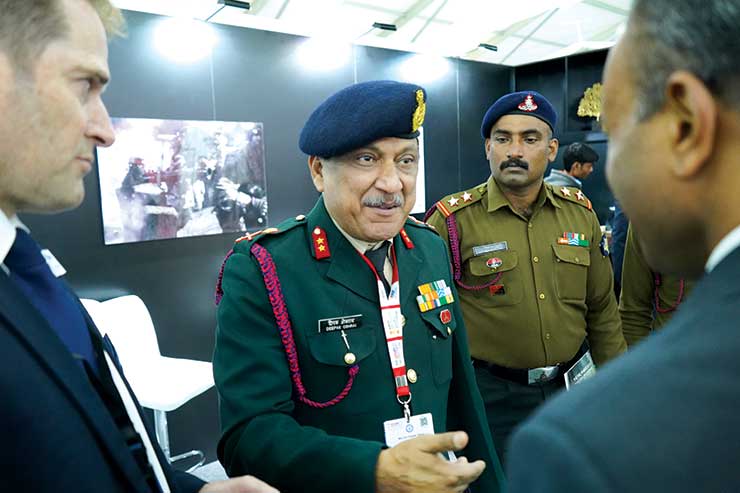
Saab is working with many suppliers in India, including CIM Tools, Tata Advanced Material Limited and Aequs (former QUEST Global Manufacturing).These companies play a very valuable role in helping Saab develop, industrialise and manufacture complex airframe assemblies for major international aircraft manufactures. Aequs manufactures and supplies assemblies for the global commercial aero structures market.
RA: How does Saab see its role in India’s aerospace needs with regards to Make in India?
India will be an important market for the aerospace industry in the next half a century. Not merely for military aircraft but for virtually every category of aerospace: military and civilian helicopters and aircraft; UAV for military and homeland security purposes and so forth.
We are equally convinced that in the decade ahead, India will be propelled to have its own home-grown large aerospace company.
We fully support India’s ambitions and we are willing to partner and share our own experience of trial and error to expedite the progress we expect to see in India on this front.
The speed and success of this major shift will depend on the ability to deal with three major aspects:
First, the systems that it develops need to account for top performance in future battlefields. Second, technologies need to be cutting edge, efficient and sustainable, as low life cycle cost and availability are key to India’s aviation ambitions given the sheer scale of requirements.
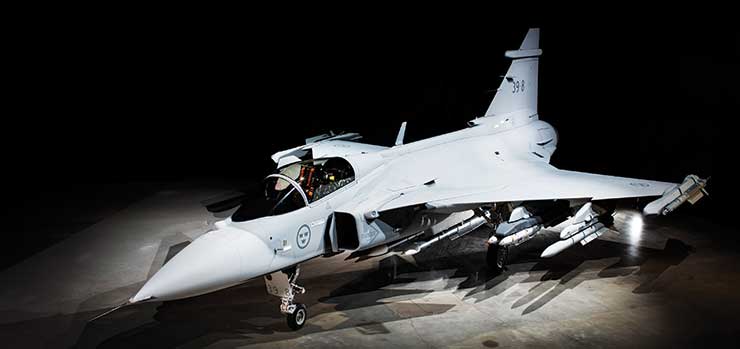
Third, there needs to be a seamless transition from design and development to manufacturing for any complex aeronautic programme to become successful.
RA: Share your experiences about the participation at the 11th edition of DefExpo in Lucknow? How do you visualise the Indian defence and aerospace market in the backdrop of India’s aspiration to become US$5 trillion economy by 2024-25 in general, and US$26 billion defence industry by 2025?
OR: Saab was proud to attend the 11th edition of DefExpo India at Vrindavan Yojana, Lucknow from February 5-8. It was a great place to showcase Saab’s ambition to contribute to India’s vision of building a larger indigenous defence industry, and help build capability that will enable India to design and build its own next-generation defence systems.
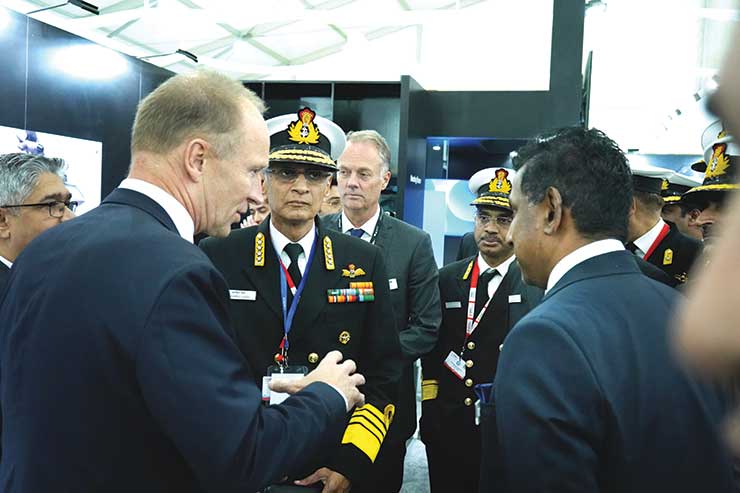
We showcased our latest technologies which are changing the defence and security planning, deployment and future force readiness. Some of the key products on display were Gripen E, Skeldar (VTOL UAV), our latest ground-based radar the Giraffe 1X, Carl Gustaf M4, AT4CS AST, next-generation Light Anti-tank Weapon (NLAW), Signature Management Systems, AUV-62- MR, Double Eagle SAROV, and Saab Light Weight Torpedo.
It was a very well organised show with fantastic infrastructure and it was great to see such an informed audience who were really appreciative of the products we displayed.








